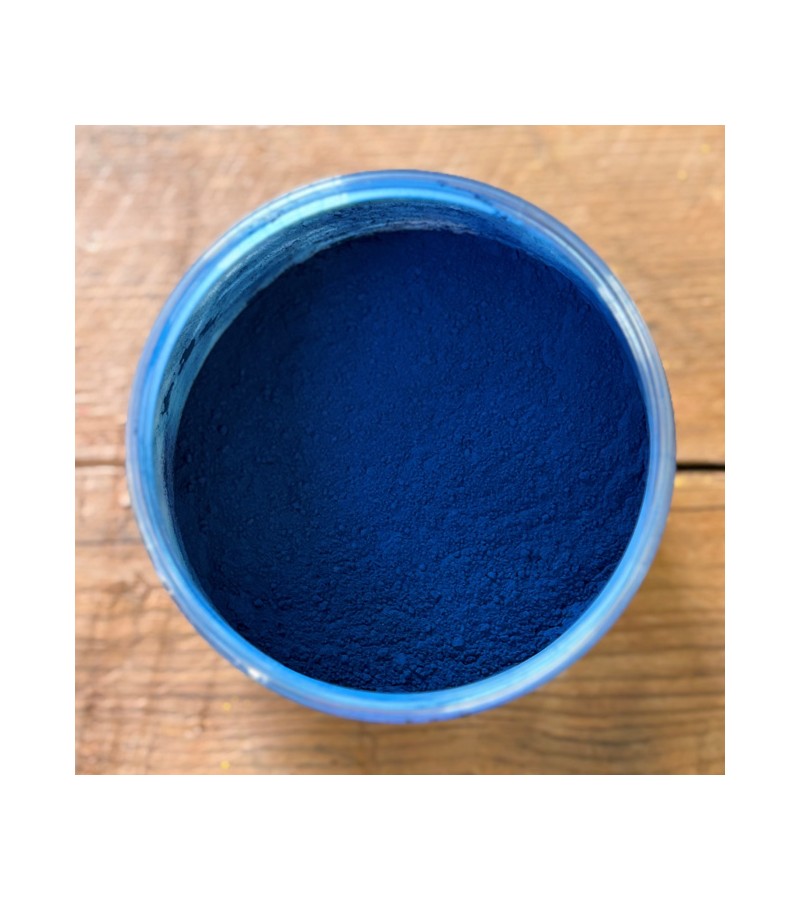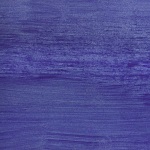




Bleu Kossoghol is a pigment preparation created by Ocres de France in 2019.
This a synthetic pigment, without any danger for health or the environment. It is composed of 94% of natural ingredients.
![]()
Pigment made by Ocres de France
![]()

Legal notices

Delivery policy

Return policy

Google reviews
Uses : lime paint, lime coating, wax, paint, plaster, fresco, glaze, cement, fine arts.
This pigment is in powder. For use in artistic painting, it should be ground finely in a mortar before mixing it with the binder.

Bleu Kossoghol mixed with linseed oil
Linseed oil : dissolve the powder in a little bit of turpentine before adding it to the linseed oil.
Water-based paint/fatty lime : dilute the pigment in some water to make it liquid before incorporating it into the paint.
Lime powder/cement/plaster : directly incorporate the pigment (up to 10% based on the weight of the binder), then mix in order to stain all of your binder.
Maximum dosage : The maximum dosage is 10% compared to the binder used. Above 10% it is recommended to incorporate fixators and adjuvant (lime use).

Photo on the left : the pigment is mixed in the Badisof Plus (limewash ready to use which you can find in our deco range) at the rate of 5% so 50g of pigment per kilo of whitewash.
Photo on the right : the pigment is mixed in the Badisof Plus at the rate of 20% so 200g per kilo of whitewash.
These renderings can be similar for any white base mixed with this pigment. However, differences could be possible for the use of paints more or less loaded with titanium dioxide (white pigment), which will give a final color more or less light. If you want to lighten a pigment, before coloring a transparent binder (linseed oil, wax, acryling binder, caparol, flour, etc), you can mix it with blanc Tiona (= white Tiona).
Color : sky blue slightly pulling torward grey mixed with a white binder.
This pigment is synthetic but composed of 94% of natural ingredients.
Made in France.
History : pigment created in 2019 by Ocres de France. We often represent the Orient with warm and spicy colours, red and yellow saffron for example... But the Orient is also Russia and Mongolia with their huge lakes and their deep blue waters. Besides, isn't it the nickname of the Mongolian name "dark blue pearl" ? The magnificient "blue kossoghol" is indeed an oriental blue, luxurious, rich and sensual, very close to the blue adopted by the famous Orient-Express.
_____________________
Our packaging :
We use recyclable PET jars, to throw away, cleaned, in the yellow bins ; and glass jar that you can clean and sterilize for other uses even for food storage.